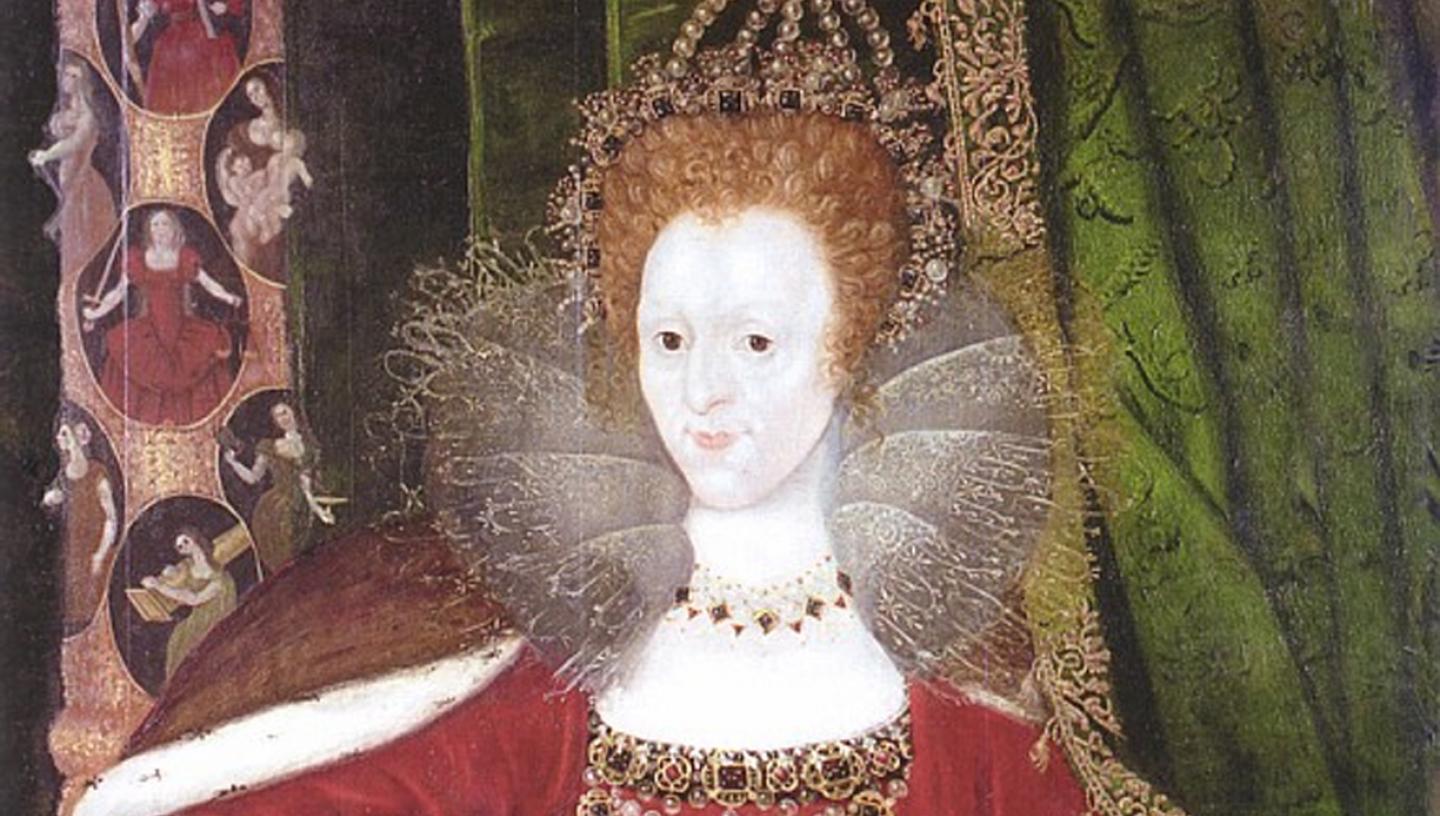
Elizabeth I with the cardinal and theological virtues
Elizabeth I with the cardinal and theological virtues (c. 1598), copyright: Dover Museum and Bronze Age Boat Gallery, was commissioned by the Corporation of Dover for the town hall there. It is on permanent display at Dover Museum and Bronze Age Boat
Very few of Elizabeth's subjects ever saw her in person. Most knew her image from coins, seals, medals, popular prints and panel paintings.
In Elizabeth I with the cardinal and theological virtues (c. 1598) the Queen is portrayed as the head of state in her parliament robes of crimson-velvet lined with ermine. Female figures on the medallions on the pillar behind her associate the Queen with the theological virtues of Faith, Hope and Charity, and the cardinal virtues of Justice, Prudence, Temperance and Fortitude; just the qualities one wants in a leader.
Forever young
Although the work was painted in the 40th year of Elizabeth’s reign, the Queen is portrayed as a young woman. The function of royal portraits was not solely to capture the likeness of a person, but to also serve as an emblem of monarchy. The aim of this painting was not to portray a 65-year old woman, but to glorify Elizabeth's authority and the stability of her reign. It also functioned to express Dover's loyalty and devotion to her.
The mask of youth
Very few artists had the opportunity to paint Queen Elizabeth I from life and most worked from approved 'face patterns' derived from official portraits. As she aged, Elizabeth’s image became more tightly controlled, with an official proclamation of 1596 ordering any 'unseemly' portraits to be destroyed. While the so-called 'mask of youth' was flattering to Elizabeth, it also served a broader purpose, as Elizabeth became an icon of stability and national independence. It’s possible the Queen wanted her image to remain youthful, rather than ponder what might follow her death.
Using our collections for research
The collections at Royal Museums Greenwich offer a world-class resource for researching maritime history, astronomy and time. This painting is on permanent display at Dover Museum and Bronze Age Boat Gallery.